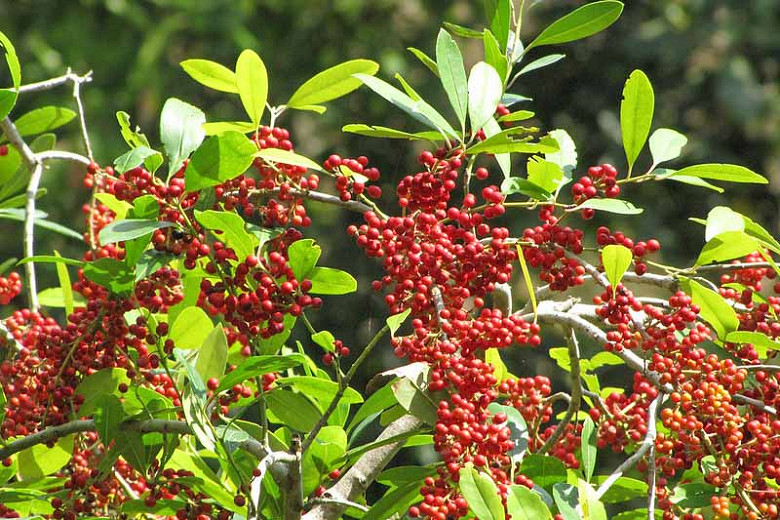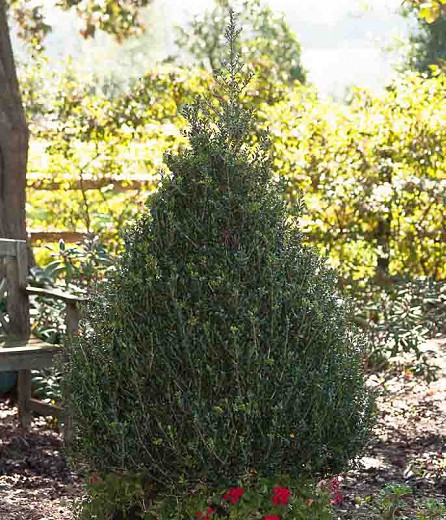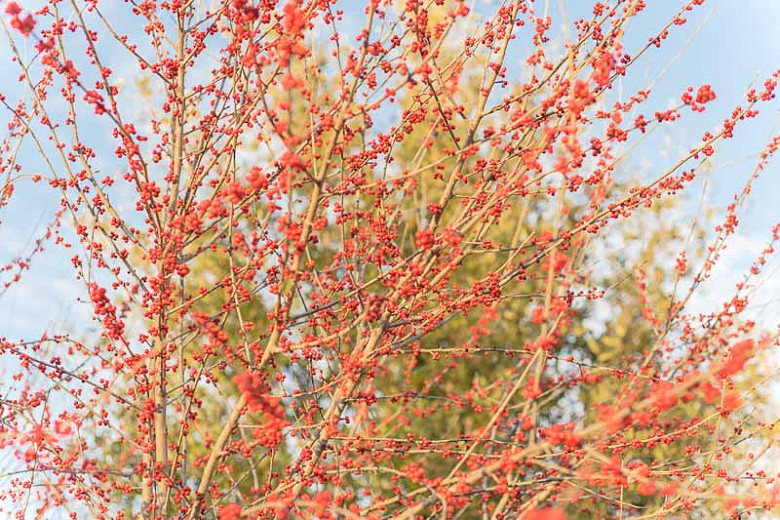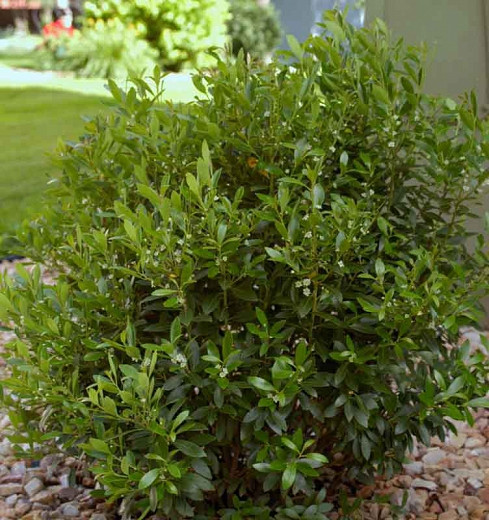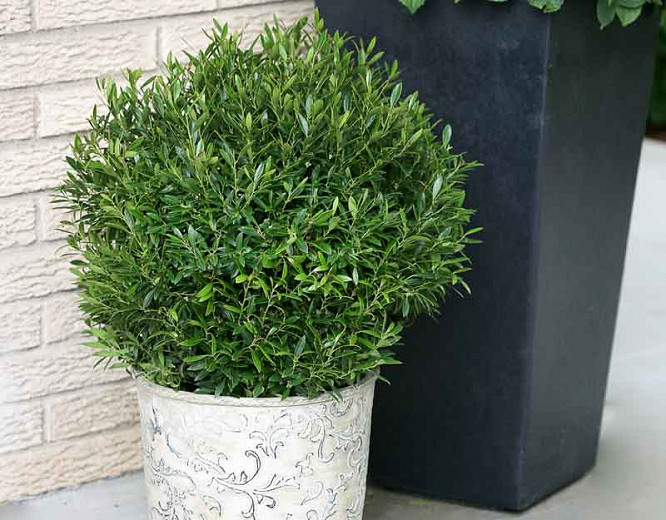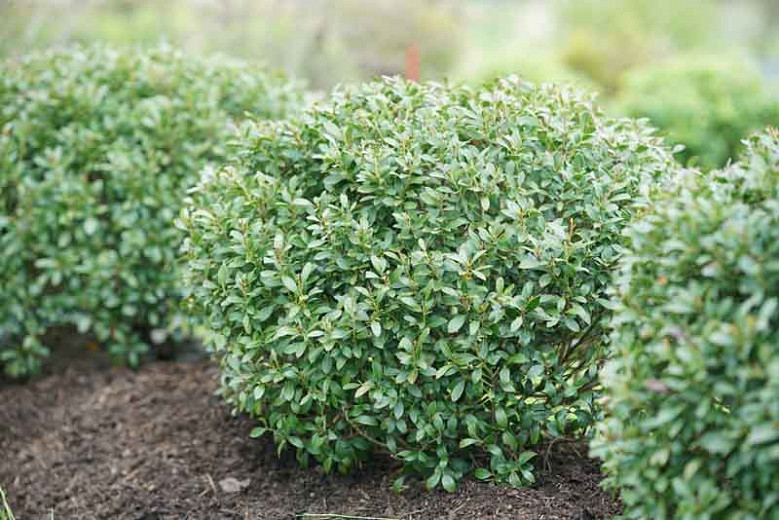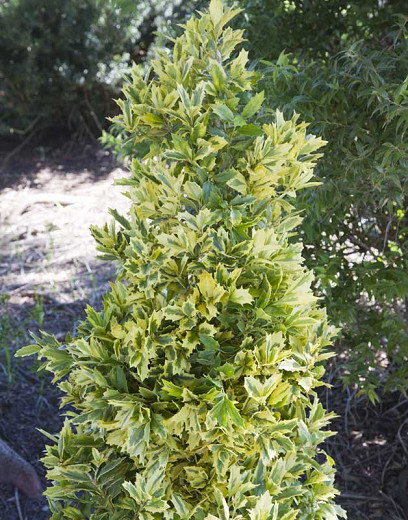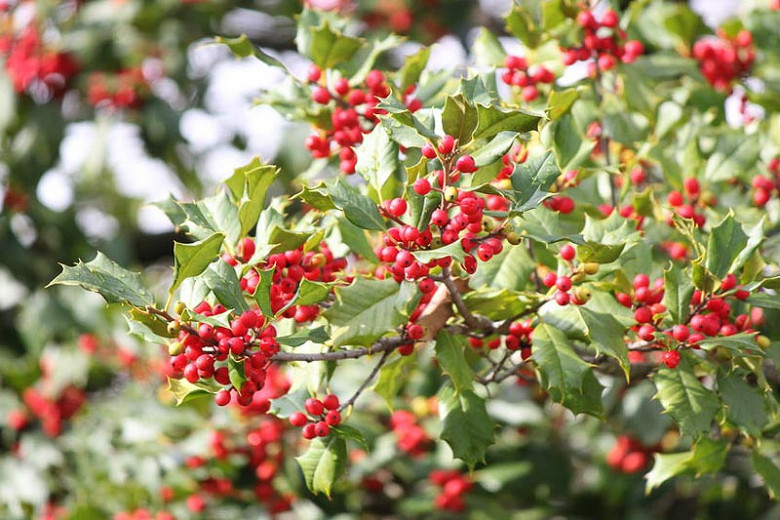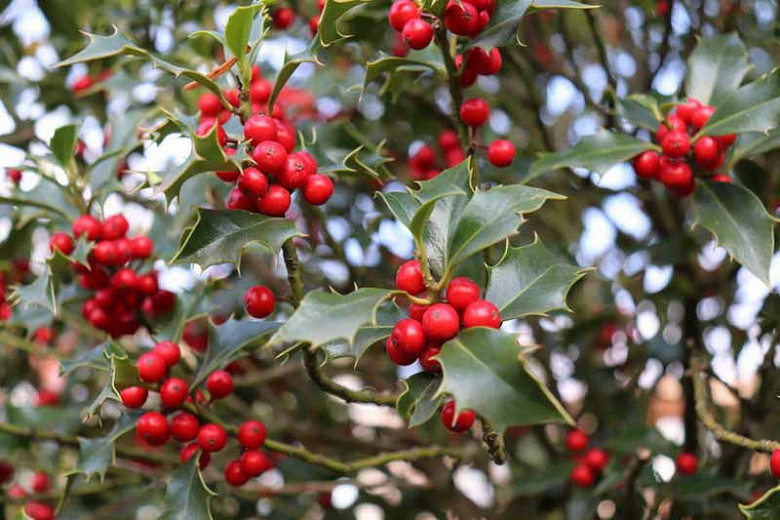Ilex cassine (Dahoon)
Particularly resistant to pests and diseases, Ilex cassine (Dahoon) is a single-trunked, small evergreen tree with an open, oval to pyramidal canopy. The alternate, shiny dark green leaves, 2-3 in. long (5-7 cm), are smooth, supple, and adorned with a few serrations near their tips. Dahoon is dioecious, with male and female flowers on separate trees. It produces abundant small greenish-white flowers in spring that are followed by prodigious amounts of attractive bright red berries on pollinated female plants. Extremely showy, they ripen in fall, persist into winter, and enliven the winter landscape unless they are devoured by birds, squirrels, and other small mammals. Providing excellent year-round interest, Dahoon is a popular landscape plant often tightly clipped into a tall evergreen screen. Both male and female plants are needed to produce attractive red berries.
- Grows up to 20-30 ft. tall (600-900 cm) and 8-12 ft. wide (240-360 cm).
- Performs best in full sun to part shade in average, moist to wet soils. Tolerates standing water as well as drier locations with some watering. Moderate tolerance to drought and salt spray. Tolerant of urban pollution.
- Good choice as a specimen or street tree. It is ideal for naturalizing in moist locations, bog gardens, rain gardens, or near ponds and streams. Can be grown in containers or above-ground planters, as a screen or hedge. This tree has been successfully grown in urban areas where air pollution, poor drainage, compacted soil, and/or drought are common.
- No serious pest or disease issues. Mites may infest the foliage on trees planted on dry sites.
- Needs little pruning to develop a strong structure.
- Propagate by seeds, which germinate in one year, or by cuttings. Cuttings are preferred. Seeds germinate the best if planted immediately after collection.
- Native to the southeastern coast of North America, in the United States from Virginia to southeast Texas, in Mexico in Veracruz, and in the Caribbean on the Bahamas, Cuba, and Puerto Rico.
Requirements
| Hardiness | 7 – 11 |
|---|---|
| Plant Type | Trees |
| Plant Family | Ilex – Hollies |
| Exposure | Full Sun, Partial Sun |
| Season of Interest | Spring (Early,Mid,Late)Summer (Early,Mid,Late)FallWinter |
| Height | 20' – 30' (6m – 9m) |
| Spread | 8' – 12' (240cm – 3.6m) |
| Water Needs | Average, High |
| Maintenance | Low |
| Soil Type | Clay, Loam, Sand |
| Soil pH | Acid, Alkaline, Neutral |
| Soil Drainage | Moist but Well-Drained, Moisture Retentive |
| Characteristics | Cut Flowers, Showy, Evergreen, Fruit & Berries |
| Native Plants | United States, Southeast, Alabama, Florida, Georgia, Louisiana, Mississippi, North Carolina, South Carolina, Southwest, Texas |
| Tolerance | Drought, Salt, Wet Soil |
| Attracts | Birds, Butterflies |
| Garden Uses | Bog Gardens, Hedges and Screens, Patio and Containers, Ponds and Streams, Rain Gardens |
| Garden Styles | City and Courtyard, Coastal Garden |
